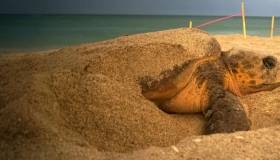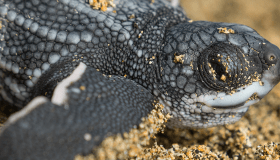
Updated February 1, 2020 – It’s February 1 and that means at least one thing. Tomorrow morning, people around the country will wake up and look for news from Pennsylvania to learn how much longer winter will last, as foretold by Punxsutawney Phil, a groundhog, on Groundhog Day.
If he sees his shadow, we can expect six more weeks of winter. If not, we’ll have an early spring. But, before you think about packing away the parka (Phil almost always predicts more winter, anyway), let’s take a quick look at the day, these rotund rodents and their relatives.
The tradition, according to the official Groundhog Club’s website, seems to have originated from an ancient Christian celebration, called Candlemas Day. On this day, halfway between the winter solstice and the spring equinox, clergy would bless and hand out candles to people. According to an old English song, the weather on the day would indicate the climate for the coming weeks.
“If Candlemas be fair and bright,
Come, Winter, have another flight;
If Candlemas brings clouds and rain,
Go Winter, and come not again.”
Germans eventually added the component of going to small, furry mammals for guidance, originally European hedgehogs, with the basic, shadow-casting tradition we know today. When German settlers came to the United States, though, hedgehogs were hard to find, so they chose groundhogs as suitable replacements, even if they weren’t in the same family.
Groundhogs, with adults weighing up to about 12 pounds, are the largest members of the family Sciuridae, which includes squirrels, chipmunks and marmots. They mostly are found in the central and eastern portions of the United States, as well as in Canada and Alaska. They gorge themselves on as much food as they can find during the summer and fall and then, as one of the few animal species that truly hibernates, they spend most of winter tucked away in their burrows. This may have helped encourage the idea they could predict the change of seasons.
They definitely get their day in the sun every February 2, but many people, especially farmers, consider groundhogs nuisances. They have a tendency to raid crops and their burrows make for unstable ground for tractor equipment and cattle and horses can break their legs by falling into a burrow’s holes.
However, groundhogs absolutely play vital parts in their ecosystem, not the least of which is their role in the food chain. They eat wild grasses, other vegetation, and even insects, and serve as prey sources for predators like wolves and hawks. They help aerate soil and their burrows provide shelter for a variety of other animals.
Morris Animal Foundation hasn’t yet funded any research on groundhogs, but we have active studies with their western cousins, prairie dogs. These ubiquitous creatures of the West provide many of the same benefits to their environments as groundhogs. They are considered a keystone species, as more than 100 other species rely on them for their food sources and shelter. Unfortunately, prairie dogs are vulnerable to the plague and when a single colony is wiped out, the ripple effects are felt far beyond their prairie dog towns.
Researchers are investigating how the bacteria that causes plague exists and ways to protect prairie dogs. Recent experiments have included dusting insecticides in burrow entrances to control fleas and vaccination baits for whole colonies to feed on. Both methods showed promise, but have not yet fully addressed the problem.
Thankfully, plague is rare in groundhogs. But can they actually predict the weather? Sorry, but the statistics say no. According to the Stormfax Almanac, in his prolific 130-year career as a weather forecaster, Punxsutawney Phil's predictions have only been correct about 39 percent of the time. So you actually have a better chance of predicting the next six week’s weather yourself with the flip of a coin.




